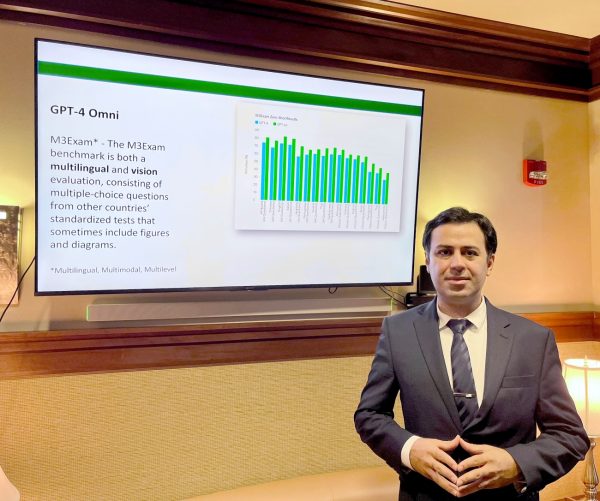Get our email updates
Stay up-to-date on the companies, people and issues that impact businesses in Syracuse, Central New York and beyond.
What's New
Upcoming Events
CNYBJ Job Board

MACNY, PEB organize student tours to mark October as Manufacturing Month
MACNY, The Manufacturers Association, and its affiliate, Partners for Education & Business, Inc. (PEB), are partnering with 15 local manufacturers to host facility tours for

Tompkins Community Bank names commercial banking regional manager
ITHACA, N.Y. — Tompkins Community Bank announced it has appointed John Huhtala as commercial banking regional manager, overseeing efforts to serve commercial business customers across Central New York. Huhtala, a 28-year banking industry veteran known for his leadership, mentorship and community engagement, will lead operations with the goal of driving growth and value for the
Get Instant Access to This Article
Become a Central New York Business Journal subscriber and get immediate access to all of our subscriber-only content and much more.
- Critical Central New York business news and analysis updated daily.
- Immediate access to all subscriber-only content on our website.
- Get a year’s worth of the Print Edition of The Central New York Business Journal.
- Special Feature Publications such as the Book of Lists and Revitalize Greater Binghamton, Mohawk Valley, and Syracuse Magazines
Click here to purchase a paywall bypass link for this article.
ITHACA, N.Y. — Tompkins Community Bank announced it has appointed John Huhtala as commercial banking regional manager, overseeing efforts to serve commercial business customers across Central New York.
Huhtala, a 28-year banking industry veteran known for his leadership, mentorship and community engagement, will lead operations with the goal of driving growth and value for the bank’s clients, Tompkins stated.
“John’s impressive career, paired with his client-first mindset, makes him the perfect leader to deliver for our team,” Johanna Anderson, Tompkins Central New York market president, said in the announcement. “We’re confident he will help us provide thoughtful, personalized solutions, focused on supporting commercial business customers.”
Huhtala joins the Tompkins team after spending more than 15 years in various leadership positions at JPMorgan Chase throughout New York City and Syracuse. He most recently served as an executive director and market executive, leading the bank’s middle-market banking business in Central New York, Mohawk Valley, North Country, and the Southern Tier.
Huhtala earned a bachelor’s degree in business administration from Nazareth College and an MBA from Binghamton University. He has previously served on multiple committees with the CenterState CEO board of directors and the Syracuse Stage board. He has also dedicated his time volunteering for Syracuse’s Honor Flight programs, OnPoint for College, and as a youth basketball coach, Tompkins said.
Founded in 1836, Ithaca–based Tompkins Community Bank serves the Central, Western, and Hudson Valley regions of New York, and the Southeastern region of Pennsylvania.

Oswego Hospital set for $14 million expansion of emergency and imaging department
OSWEGO, N.Y. — Oswego Health says construction will begin this week (Oct. 6-10) on a $14 million, multi-phase renovation and expansion project in the emergency

Oneida Pediatric Group joins Oneida Health
ONEIDA, N.Y. — Oneida Pediatric Group, which has offices in both Oneida and Camden, is now part of Oneida Health. With this integration, Drs. Kapriel Danadian and Rezkellah Toro, and Deborah Staple, PA-C will continue to provide care at both locations. They care for children from newborns through adolescence, and they’re currently welcoming new patients,
Get Instant Access to This Article
Become a Central New York Business Journal subscriber and get immediate access to all of our subscriber-only content and much more.
- Critical Central New York business news and analysis updated daily.
- Immediate access to all subscriber-only content on our website.
- Get a year’s worth of the Print Edition of The Central New York Business Journal.
- Special Feature Publications such as the Book of Lists and Revitalize Greater Binghamton, Mohawk Valley, and Syracuse Magazines
Click here to purchase a paywall bypass link for this article.
ONEIDA, N.Y. — Oneida Pediatric Group, which has offices in both Oneida and Camden, is now part of Oneida Health.
With this integration, Drs. Kapriel Danadian and Rezkellah Toro, and Deborah Staple, PA-C will continue to provide care at both locations. They care for children from newborns through adolescence, and they’re currently welcoming new patients, per the Oneida Health announcement. No financial terms were disclosed.
“We are thrilled to officially welcome Oneida Pediatric Group into the Oneida Health family,” Felissa Koernig, president and CEO of Oneida Health, said. “This integration strengthens our commitment to delivering high-quality, compassionate care to children in our community. Families can expect the same trusted providers, now backed by the full support and resources of the Oneida Health network.”
Danadian noted that the partnership will enhance coordination between pediatric care and other specialties within the network, making it easier for families to access the services they need.
“Joining Oneida Health allows us to continue doing what we love — caring for children — while expanding our ability to serve families with even greater efficiency and support,” Danadian said.
Joining Oneida Health opens new doors for innovation and collaboration, ensuring that pediatric patients receive the most up-to-date and comprehensive care available, Toro added.

Herkimer County HealthNet to use Health Foundation funding for older-adult initiative
HERKIMER, N.Y. — Herkimer County HealthNet (HCHN) says it will use a $42,500 grant from the Health Foundation for Western & Central New York to

Work on Adirondack Rail Trail, project at Tupper Lake rail station wraps up
Construction is complete on the third and final phase of the Adirondack Rail Trail, making the 34-mile, multi-use recreational corridor between Lake Placid and Tupper

F. M. Howell & Company names new CFO
ELMIRA, N.Y. — F. M. Howell & Company, an Elmira–based provider of packaging products and services, announced on Monday that it has appointed Michael P. Hosey as its new chief financial officer (CFO). He brings extensive experience in financial leadership and community engagement to the role. Hosey has served as the company’s interim director of
Get Instant Access to This Article
Become a Central New York Business Journal subscriber and get immediate access to all of our subscriber-only content and much more.
- Critical Central New York business news and analysis updated daily.
- Immediate access to all subscriber-only content on our website.
- Get a year’s worth of the Print Edition of The Central New York Business Journal.
- Special Feature Publications such as the Book of Lists and Revitalize Greater Binghamton, Mohawk Valley, and Syracuse Magazines
Click here to purchase a paywall bypass link for this article.
ELMIRA, N.Y. — F. M. Howell & Company, an Elmira–based provider of packaging products and services, announced on Monday that it has appointed Michael P. Hosey as its new chief financial officer (CFO).
He brings extensive experience in financial leadership and community engagement to the role. Hosey has served as the company’s interim director of finance since April, according to a prior announcement on the F. M. Howell & Company website. That came after the unexpected death of Pamela A. Brayton, the firm’s executive VP of finance and treasurer, in mid-March.
Hosey began his career at the local accounting advisory firm Mengel Metzger Barr & Co. and spent 38 years with Elmira Savings Bank, where he advanced from controller to CEO and then chairman of the board. During his tenure, the bank expanded to 16 locations across six counties with assets of about $625 million, per the Oct. 6 announcement.
Hosey has also served as a member of the F. M. Howell & Company board of directors since 2015. He is also deeply involved in the Elmira community, serving on the boards of multiple nonprofit organizations.
“Mike consistently demonstrates determination and a commitment to excellence. His experience and leadership will contribute significantly to the continued growth and success of our company,” Katherine H. Roehlke, president and CEO of F. M. Howell & Company, said in the announcement.
Hosey earned his bachelor’s degree in accounting and an MBA in finance from the University of Scranton.
F. M. Howell & Company is a fourth-generation, family-owned and privately held business that was founded in 1883. It is a certified women’s business enterprise. Three divisions offer related services to the pharmaceutical industry and beyond: Howell Marketing Services provides fulfillment and distribution services; Howell Packaging designs and manufactures folding cartons and rigid boxes, while also offering secondary contract packaging services; and Howell Plastics specializes in custom thermoforming of plastic packaging products.

Cornell University using $5 million NIH grant to launch autism-research center
ITHACA, N.Y. — Investigators at Cornell University’s Ithaca campus and Weill Cornell Medicine will use a three-year, $5.1 million grant to launch an autism-research center.

Firley, Moran, Freer and Eassa names new managing partner
SYRACUSE, N.Y. — Firley, Moran, Freer and Eassa CPA, P.C. (FMF&E), a Syracuse–based accounting and advisory firm, announced that it has appointed Andrea LaBarge as its new managing partner. She follows current Managing Partner Daniel Gilheney, who will transition to the role of senior advisor following 38 years of leadership and service at the CPA
Get Instant Access to This Article
Become a Central New York Business Journal subscriber and get immediate access to all of our subscriber-only content and much more.
- Critical Central New York business news and analysis updated daily.
- Immediate access to all subscriber-only content on our website.
- Get a year’s worth of the Print Edition of The Central New York Business Journal.
- Special Feature Publications such as the Book of Lists and Revitalize Greater Binghamton, Mohawk Valley, and Syracuse Magazines
Click here to purchase a paywall bypass link for this article.
SYRACUSE, N.Y. — Firley, Moran, Freer and Eassa CPA, P.C. (FMF&E), a Syracuse–based accounting and advisory firm, announced that it has appointed Andrea LaBarge as its new managing partner.
She follows current Managing Partner Daniel Gilheney, who will transition to the role of senior advisor following 38 years of leadership and service at the CPA firm, including five years as managing partner.
LaBarge, CPA, CGMA, is the first woman managing partner in the firm’s 45-year history, FMF&E said in its announcement. LaBarge started her career with EY Chicago, before joining FMF&E in 2005. She is part of the firm’s executive committee and has led its audit and accounting department since 2019. She currently co-leads FMF&E’s national energy practice and will continue to do so in her new role, the firm said.
Gilheney, CPA, CFE, joined FMF&E in 1987 and has served as managing partner since Oct. 1, 2020. He has been instrumental in shaping its culture, expanding its focus on client service, and mentoring the next generation of leaders, the firm contended. In his new role as senior advisor, Gilheney will remain actively engaged with the firm and its leadership.
“It’s an honor to step into this role and build on the foundation Dan and those before him have helped shape,” LaBarge said in the announcement. “I look forward to leading our Firm through continued growth and innovation; while ensuring our clients continue to receive the high level of service and attention they have come to expect from us.”
Gilheney added, “It’s been an honor to have led this Firm over the last five years and to have worked with a talented group of professionals for the past 38 years… I have worked closely with Andrea since 2005, including her time on our Executive Committee over the last five years. I have every confidence in Andrea’s leadership and the continued success of our Firm.”

SUNY Oswego professor selected for SUNY’s inaugural AI for the Public Good fellows program
OSWEGO, N.Y. — SUNY Oswego’s Mohammad Tajvarpour is one of 20 members in the inaugural class of SUNY’s AI for the Public Good fellows. Tajvarpour’s
Get our email updates
Stay up-to-date on the companies, people and issues that impact businesses in Syracuse, Central New York and beyond.
